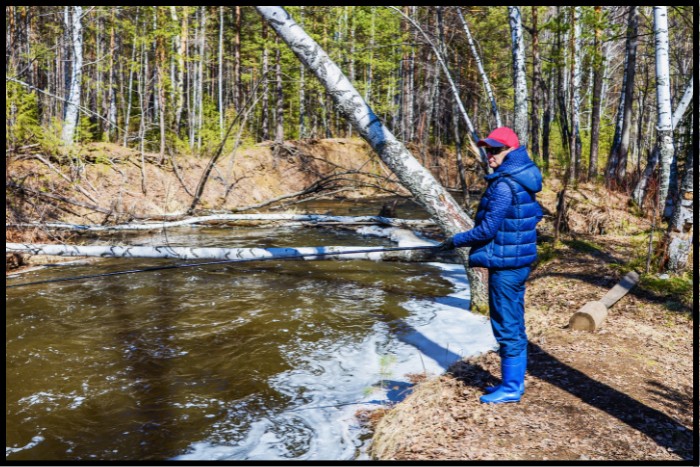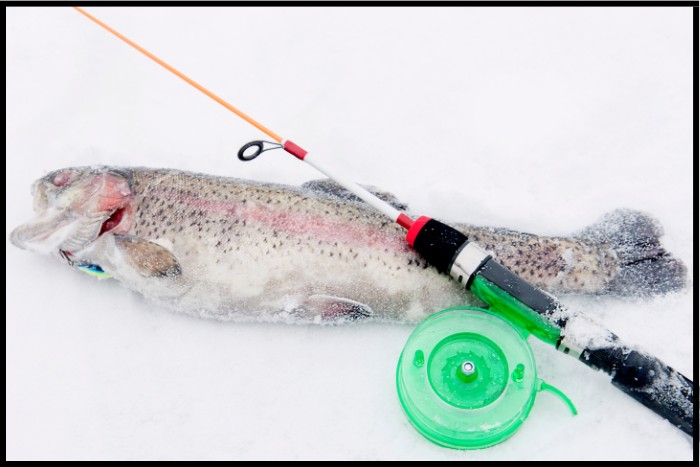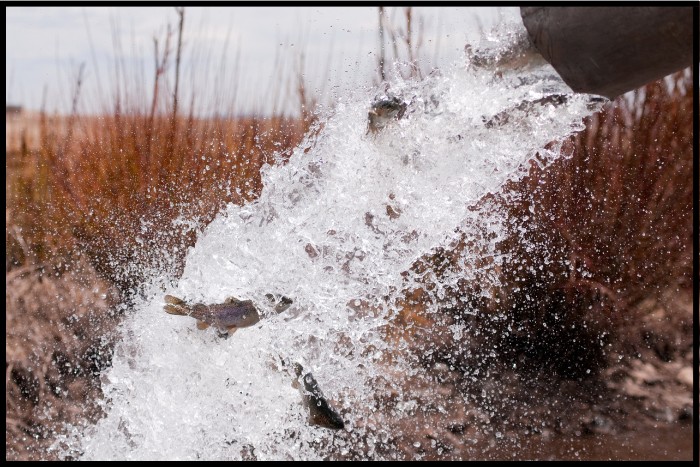Trout fishing is naturally challenging, and maximizing your chances by using the right baits, picking the right areas, and, most importantly, fishing during the best time of day to catch them. This article will answer the last part below.
The best time to fish trout is usually in the early morning and late afternoon. However, this may change depending on the weather, time of year, and where you are fishing. During winter, trout might be sluggish until mid-day; during cool, cloudy periods, trout will bite all day.
The best time of day to catch trout will vary based on many factors, and we’ll outline some factors to consider when choosing what time to go trout fishing.
Trout Year-Round: How To Know When To Fish?
Fishing for trout can be incredibly discouraging for new anglers, especially when you don’t know all the best tips and tricks to catch them.
My article on trout fishing tips for beginners will give you some incredibly useful ideas!
Fishing during periods the fish are most active will help drastically and help you build trout-fishing confidence.
1. Best Time To Catch Trout In Spring
For spring fishing, the best times to try your luck are in the morning and the early evening.
Additionally, spring is one of the best times to fish for wild trout as the snow and ice runoff will increase water flow and result in ideal conditions for trout activity.
Trout are more likely to be found in shallow water, where they feed on insects and other small creatures during spring weather.
The fish will stick near the banks and other shallow water, especially near laydowns and other cover they can hide near.
Anglers can try using dry flies, nymphs, and streamers to mimic the natural baits during this time of year.

2. Best Time To Catch Trout In Summer
Depending on how warm the weather gets in your area, summer can be challenging to catch trout as the water temperature rises, and trout become more sluggish and less active.
To combat the rising heat and its effect on the trout, pick early mornings and near sundown to fish during the coolest parts of the day when the trout might be less overheated.
During summer, trout will also stick to deeper parts of the body of water, so choose bait and lures you can fish near the bottom.
Also, stick with slow-moving finesse-style lures since trout will be sluggish and less likely to chase moving bait.
3. Best Time To Catch Trout In Fall
Fall trout fishing means the weather is cooling down, and the fish will be more active throughout the day.
Depending on water temperatures, you can expect fall fishing to be best in the early morning and late afternoon during early fall, and late morning and early afternoon being best while temperatures drop even lower.
Fall also correlates with the hatching season for many insects, and trout like to stick near fast-flowing water to catch drifting insects and eggs that float by.
Matching small floating flies and eggs near flowing water will catch you many trout, or you can use larger bait that mimics small fish as trout try to stock up for winter.
4. Best Time To Catch Trout In Winter
Winter is the most challenging time of year to catch trout, and you’ll want to watch the weather closely to fish during the warmest days of the week and during the warmest times of those days.
Typically the window for catching trout in winter will be between 11 am and 2 pm, but this might vary slightly depending on location.
However, trout will be incredibly slow and sluggish even on the best winter days.
When fishing for trout in the winter, using slow and subtle movements is essential when presenting your bait or lure.
Fast movements mean the fish are less likely to chase after their food and may be easily spooked.
Light lines and smaller baits or lures will entice them to bite if you’re in the right spot and a little bit lucky.
Check out my recommendations for the best trout fishing baits to increase your catch rate!

5. Try Catching Trout In Cloudy Weather
Cloudy weather can be an ideal time to catch trout as it covers the fish and reduces the amount of light penetration in the water.
The lack of shadows, as a result, can make the fish more active and willing to feed.
The best time to catch trout in cloudy weather is consistent cloud cover throughout the day rather than just sporadic periods of cloudiness.
Cloudy weather is bad for trout predators since they cannot see through the water clearly, and trout know this, so they will be more brave in venturing through the water.
Brave trout will also be less easily spooked, so this is one of the best times for an angler to catch them while bank fishing.
Fishing in cloudy weather is best with dark-colored lures and baits that will appear in more solid shapes than light colors.
Dark colors will help the trout spot lures in the water from a further distance, and since they are more likely to be out and about hunting for food, the fish will chase your lure further away.
6. Try Catching Trout Around Storms
Trout are more active in their feeding behavior around storms. Stormy weather causes atmospheric pressures to drop, triggering a natural aggressive feeding response in trout.
Combine this with the fact that trout are more likely to feed during cloudy weather and have ideal trout fishing conditions.
Fishing during a storm can be dangerous; exercise increased caution during storms and seek shelter when needed.
Fishing before or after a storm can be very productive, and the best time to fish for trout is typically right before or right after the storm has passed.
The change in atmospheric pressure and the increased activity of insects and aquatic creatures can create a feeding frenzy for trout.
Fishing for trout right after a storm is also great since rain and wind will push insects and other bits of food into the water for the trout to feed on, causing an additional feeding frenzy.
Rain will also oxygenate the water and stir up mud, making trout hungry, active, and less easily spooked.
7. Best Time To Catch Trout After Being Stocked
Trout stocking is a common practice by fish and wildlife agencies to increase recreational fishing opportunities.
When trout are stocked, they may be more likely to bite due to the stress of being transported and released into a new environment, making them vulnerable to being caught by anglers.
Trout stocking schedules vary depending on location and time of year. Check local fish and wildlife agencies for stocking information.
Typically, the best time to catch trout is within the first few days after they have been stocked.
Thanks to the stress of being moved to a new location from stocking, trout will quickly bite anything that moves near them, making it easy to catch them on various lures.
However, don’t fret if you cannot make it immediately after stocking.
After waiting for two weeks or so for the fish to settle in, the ones that have not already been caught will be comfortable in their new habitat, so you can choose a time based on the other recommendations on this list to catch the newly settled fish.

Conclusion
So there you have it, seven factors affecting trout fishing and when the best times as a result of those differences.
Generally, your best bet will be during the early morning and late afternoon as the fish will feel safer, but watch the weather for a well-informed decision.
Remember that trout are cold-water fish, thriving in temperatures of 67 degrees and below, and are just as active down to 44 degrees.
If temperatures fall on either side of that range, you’ll want to fish during the warmest/coolest parts of the day.
